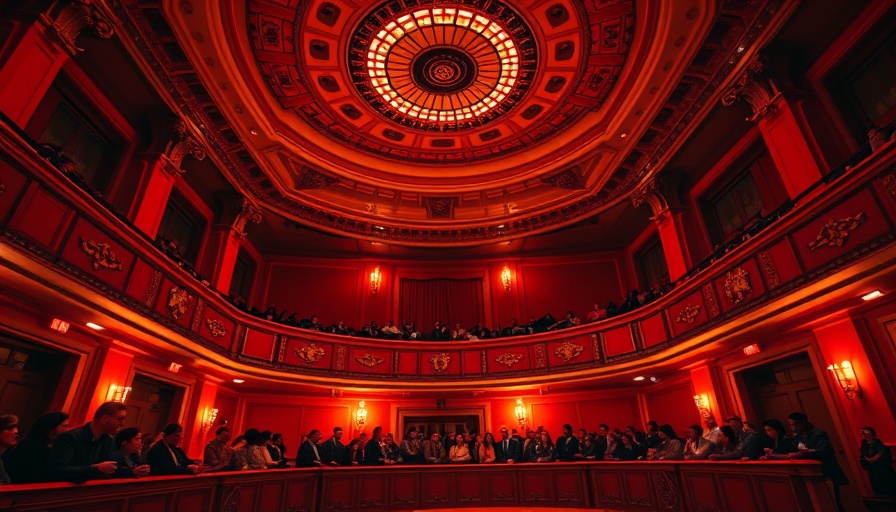
A Financial Crisis at the Heart of American Arts
The Kennedy Center for the Performing Arts, a cherished icon of American culture, is facing an alarming financial meltdown under the management of its new interim director, Richard Grenell. Known for his prior role as President Trump’s envoy, Grenell's recent announcement shocked the arts community: the center reportedly has ZERO cash and reserves, and is precariously handling a substantial deferred maintenance crisis. This revelation raises serious questions about financial stewardship within one of the U.S.'s most prominent cultural institutions.
Ripple Effects of Leadership Changes
Grenell's leadership comes during a tumultuous time for the Kennedy Center, which has now seen the firing of five top executives, whose combined salaries totaled approximately $2.4 million. With Grenell aiming to revitalize the institution, the dismissed leadership raises debates about the effectiveness of management choices. Critics argue that such radical staffing changes should have been approached more cautiously to avoid further destabilizing an already precarious situation.
What’s Behind the Curtain? The Unraveling Budget
Financially, the Kennedy Center has been heavily reliant on federal funding, receiving about $45 million from its $268 million budget. This funding is crucial for its survival, especially as ticket sales have dwindled, prompting prominent artists like Issa Rae to cancel performances. Ultimately, the charm of the grand institution is at stake—yet donors are becoming increasingly hesitant amid whispers of financial mismanagement.
A Future Spiraling in Debt?
The stark reality is that the Kennedy Center has started to draw upon debt reserves to maintain operations—a method that is not sustainable for the long term. Many wonder if Grenell’s plans to stabilize the center will succeed or if it is merely trying to patch a sinking ship. Without aConcrete strategy to restore donor confidence and bolster revenues, even his best efforts might not be enough to save the center.
The Cultural Significance of the Kennedy Center
The importance of the Kennedy Center cannot be overstated. As a beacon of culture and politics, it has historically garnered bipartisan support. Current efforts to rescue it must acknowledge its institutional heritage. Will Grenell frame his plans with a focus on inclusivity and cultural legacy? His ability to communicate effectively with both audiences and stakeholders will determine whether the Kennedy Center can weather this storm.
Can Art Survive Budget Cuts?
The arts community faces chronic underfunding, especially evident at the Kennedy Center. Grenell’s path forward will need to prioritize restoring financial health while advocating for sustained investment in arts education and programming. Securing partnerships and alternative funding could be vital as conventional ticket sales may not provide enough relief. Increasing outreach and fundraising campaigns grounded in community engagement might be the steadfast hand that is needed.
As the nation’s preeminent arts institution navigates this budgetary tempest, observers, artists, and stakeholders alike should be alert to Grenell’s forthcoming plans. Will they embrace a transformative vision that emphasizes collaboration and cultural vitality? Or will caution govern decisions marked by the urgency of financial recovery?
The future of the Kennedy Center is an ongoing story that demands attention and action. Stakeholders must rally to uphold its cultural significance, while the community can play a pivotal role in invigorating its future.
 Add Row
Add Row  Add
Add 




 Add Row
Add Row  Add
Add 

Write A Comment